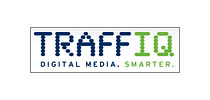 TRAFFIQ announced a partnership with Transworld Advertising Agency Network (TAAN), a network of independent advertising agencies in 40+ markets worldwide. According to the press release, “TRAFFIQ will be the digital media platform TAAN recommends to its member agencies.” Read it.
TRAFFIQ announced a partnership with Transworld Advertising Agency Network (TAAN), a network of independent advertising agencies in 40+ markets worldwide. According to the press release, “TRAFFIQ will be the digital media platform TAAN recommends to its member agencies.” Read it.
TRAFFIQ CEO Mark Kahn discussed the TAAN partnership, agency holding companies and client momentum.
AdExchanger.com: How are you solving the services needs for TAAN members — and other clients for that matter? For example, it would seem that with TAAN’s member agencies all over the world, it could be a particular challenge for TRAFFIQ and the agencies?
MK: TAAN and its member agencies face the same challenges as our other clients: the need to maximize scale and efficiency, but to also exercise total media control with as much transparency as possible. In the ever-changing digital ecosystem, buyers face a set of challenges that require specific tools built for their needs. Legacy marketing systems are being retrofit to adapt to today’s digital climate; TRAFFIQ is custom-built for the digital world specifically to deliver scalable, SaaS-model infrastructure to agencies looking to do more with less.
TAAN’s members are mostly mid-size agencies, which is an under-served market but one that is a focus for TRAFFIQ. Unlike the large holding company shops who seem to have limitless resources, many smaller agencies don’t yet have access to planning data, ad serving software, or advanced analytics. For these bandwidth-constrained agencies, TRAFFIQ can be a complete digital display solution, addressing RFP creation, distribution, ad serving, analytics, and billing and reconciliation. Ultimately, what we really provide is bandwidth. As more marketing budget moves in the digital direction, agencies must master a new discipline. Adding digital budget means adding more tools, more personnel trained in digital media and ad operations, having to spend more time on billing, etc.
The global nature of TAAN reflects TRAFFIQ’s coming focus on expansion beyond the U.S. We built the system on a scalable architecture with the ability to be multi-lingual, providing us flexibility as we introduce TRAFFIQ into new markets. Agencies around the world are laser-focused on unlocking pockets of inventory and audience that perform for them — however, today’s tools often don’t allow enough cross-border communications.
Brands are global, e-commerce is global, and therefore, TRAFFIQ is uniquely positioned to help all agencies identify target audiences wherever they may be. We expect that international TAAN members will quickly learn to create their own marketplaces of local inventory based on their activity, as liquidity breeds growth in any market.
Is it difficult making partnerships with other advertising holding companies once you’ve publicly announced a partnership with a competing holding company?
It’s something that both TRAFFIQ and our partners are sensitive to, but it hasn’t been an obstacle to growth. Holding companies and agency consortia like TAAN understand that in a business like ours, exclusivity rarely exists. But that’s also a good thing. TRAFFIQ is a demand aggregator, only for guaranteed premium inventory and audience instead of non-guaranteed in the traditional DSP/RTB model. Liquidity is everybody’s friend. It helps set appropriate values on inventory and audience, attracts more publishers and networks looking to create a new sales channel, and delivers more product feedback — ultimately benefiting everybody. TAAN is more of an agency group, rather than a holding company. Each agency is independently owned, but all the shops share resources and refer business to one another. Groups like Worldwide Partners, AMIN, San Jose Networks and Magnet Global all have a slightly different approach to how they work, but share the belief that there is strength in numbers.
How does business look these days between agency and direct advertiser clients and how do you see this playing out in the future?
The advertisers are catching up to agencies, both in focus on digital media and in sophistication. This also is a good thing for everybody involved. Agencies are being forced to sell their value by delivering insightful and actionable data, not just their ability to procure inventory. This pushes the entire industry forward, as their need to extract more data and insights will drive sellers to make this information available to their clients. This is part of the reason we partnered with Datran for their Aperture product. Direct advertisers will either be lured back to agencies to help them synthesize data, or they’ll look for tools that can help them do it themselves.
By John Ebbert












